Pen Cai (盆菜)
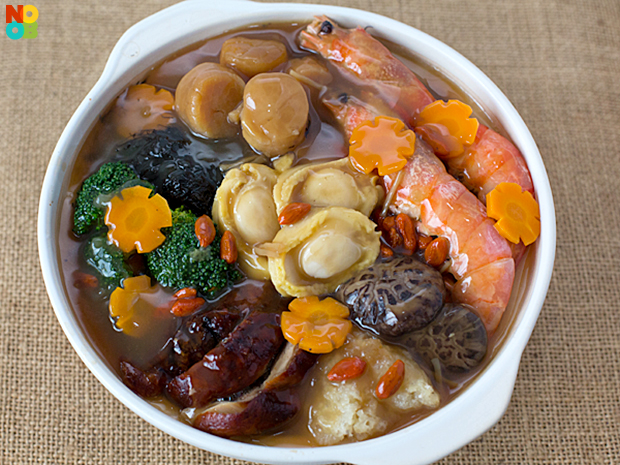
Pen Cai (Poon Choi/Pen Chai/Peng Cai/Big Bowl Feast) literally means “basin vegetables” (盆菜) as it was traditionally served to the Emperor in wooden washbasins during the Song Dynasty (adapted to claypot or casserole in modern times).
See Also:
It is a traditional one-pot Chinese dish of Cantonese origin, and have been a very popular dish in Hong Kong. In recent years, the dish gained immense popularity as a Chinese New Year dish in Singapore. A distinctive feature of Pen Chai is that the ingredients in the claypot are cooked separately, layered and topped with an assortment of seafood delicacies fit for royalty (with luxurious seafood such as abalone and scallops). Eating pen cai signifies abundance and richness in the coming year. I made this pen cai on Sunday for my family’s early Chinese New Year reunion dinner as I will be away during the festive season and I’m happy that it was well-received on the dinner table!
Auspicious symbolisms of Pen Cai ingredients:
- Fat choy (dried moss) sounds like “fatt choi” (striking it rich)
- Prawns (sounds like “ha” in Cantonese) symbolizing laughter (笑 “哈哈”) and happiness
- Green ingredients (broccoli): 青春常驻 (perpetual youthfulness)
- Red items (carrot and wolfberries): 鸿运当头 (good fortune)
- White radish (daikon): 风生水起/步步高升(increasing growth & prosperity)
- Abalone: 年年’包’有余 (increasing abundance). They also looked like ingots (ancient China currency symbolising wealth)
- Golden ingredients (scallops, tau kee, fish maw, tau kwa): 翩地黄金 (abundant wealth)
- Carrots cut to flower shapes: 花开富贵 (blooming success).
Step-by-Step Photos (How to layer the ingredients)
Here’s a step-by-step on how I layer my casserole of treasures. The bottom ingredients are those which can absorb the braising sauce most efficiently. The top layer are the luxury and auspicious items.
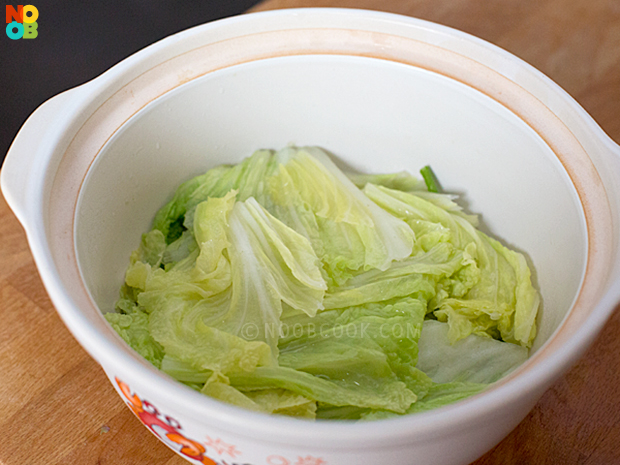
Layer 1: Napa cabbage

Layer 2: Tau kee (beancurd skin)
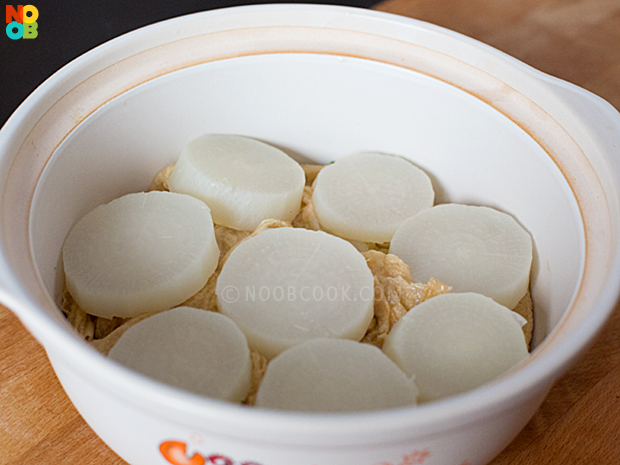
Layer 3: Daikon (white radish)
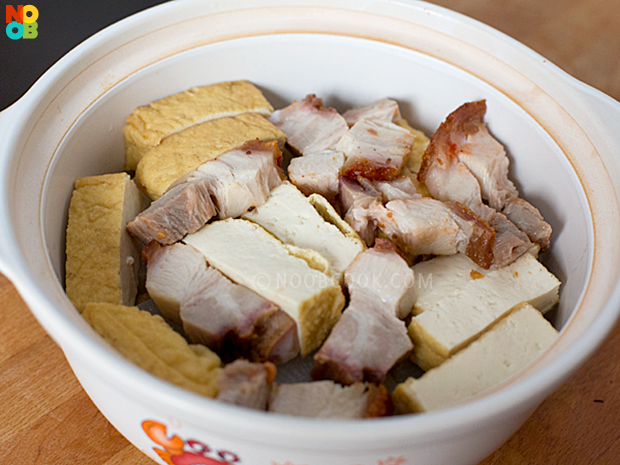
Layer 4: Tau kwa & siu yok
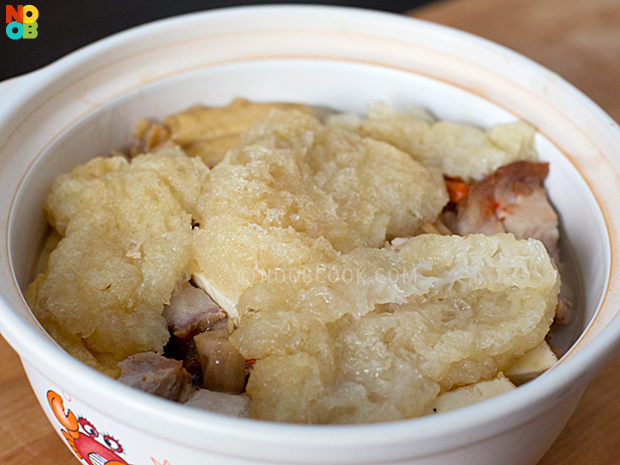
Layer 5: Fish maw (3/4 of it)
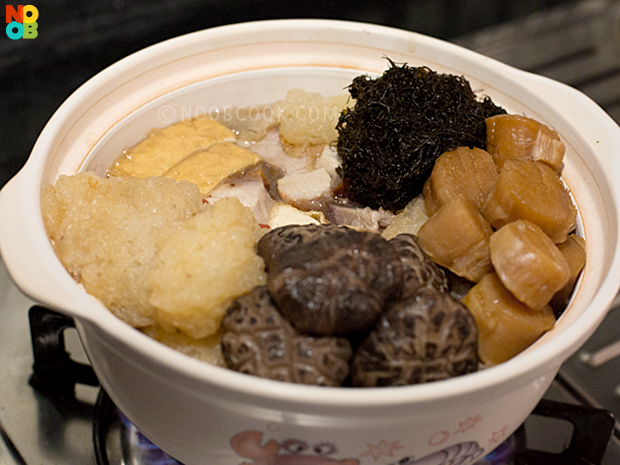
Layer 6: Fat choy, scallops, mushrooms & remaining fish maw. Add gravy until just before the top layer. Cover with lid and simmer for 10 minutes.
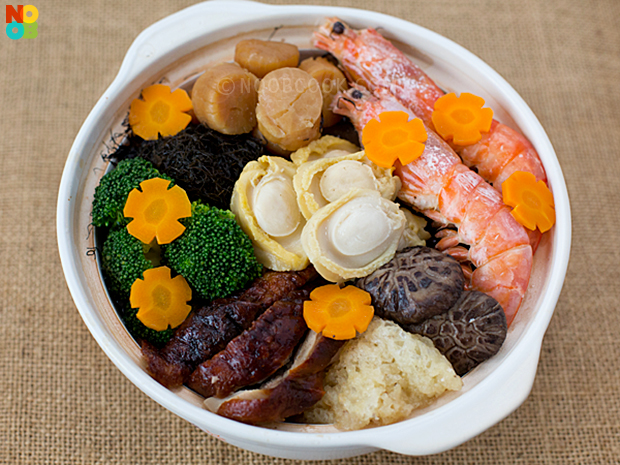
Layer 7: Top with the remaining ingredients (broccoli, abalone, prawns, carrots, roast duck, fish maw).

Layer 8 (last layer): Bring remaining sauce to a simmer, and while the sauce is still bubbling, pour it over the ingredients until filled to the brim. Ready!!!
Even though I used some shortcuts (store-bought fried beancurd & roast meat), it still took me 3 hours to make this dish from start to finish! Although it is tedious and time-consuming to prepare, the method is relatively easy. My cost price for the ingredients was S$100 but I believe the market rate at restaurants is easily S$300, so there is strong justification for all that hard work. The pot is also very filling and can easily be served as a one-dish meal for 6 persons (we had other Chinese New Year dishes to accompany it though), with possibly leftovers for the next day.
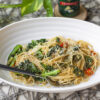
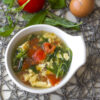

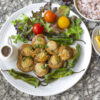
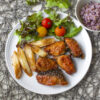
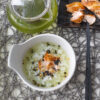
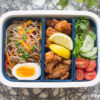
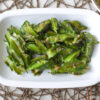
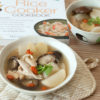



thank You for your instructions, look forward for other recipe
Hi Wiffy, do you have any recommendation as to where we can get good quality and afforable dried goods in Singapore?
Hi Xian Hui, I purchased most of my dried goods from Fu Hua as it’s conveniently located at shopping malls. But it may not be the cheapest. For the dried scallops, my sis brought back from Hong Kong, the dried goods are much cheaper there.
Thanks Wiffy!
Hi Wiffy
I was wondering if it is possible to cook this dish on the 2nd or 3rd day of CNY. But then, here comes the problem of storing and reheating the roast duck and pork belly. Any advice?
I believe roast duck and pork belly can only store in the fridge for a day or two, so you have to plan when to cook this accordingly.
Hi, your pen cai looks very yammy. But how do you prepare the sauce? Thank you. cindy
the recipe for the sauce is on page two.
Do you have a recipe for Vietnamese “Chao Long” soup??
hello!! May I just check with you on the last step of ‘assembling of pen cai’ , where does the ‘remaining sauce’ come from? Are you referring to the chicken broth in step D? Please kindly advise. thank you!!! ;)
The recipe for sauce is on page two of recipe, steps D and E.
Thank you for your lovely post. I have some frozen sashimi-grade scallops. Can I use that in place of conpoy?
Yes you can but you don’t have to cook them for as long as the dried conpoy.
Thank you! I ended up using mini conpoys :)
Thank you for the recipe. Had tried cooking it last night and it taste heavenly. However I encounter a big issue here. I cooked this Poon cai last night, placed them in the Claypot together with the broth in it and reheated the whole poon cai over the stove this afternoon. When we taste the broth again, it has this smell that resemble burning or wok hei. Can advise?
I’m not sure, but maybe the bottom of the claypot got sorched? Adjust the heat accordingly.
Hi, thank you for sharing your pen cai recipe and detailed step by step tutorial! I have tried preparing this dish following some of your steps and tips and it turned out great! Thanks!
Hi wiffy,
May I know if I am making in the morning to bring for a reunion dinner, for best taste should I store in the fridge or leave on countertop after cooking? How long should I reheat it? (Or do I keep the sauce and pour on before serving?)
Thanks for your advise. This is my first time trying pen cai recipe :)